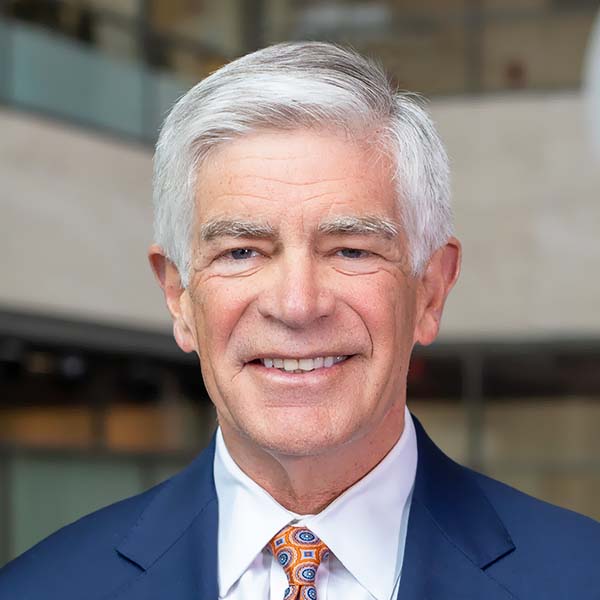While it’s always a pleasure to be in Dallas, it’s particularly enjoyable to be in such exceptional company, so thank you. I’ll keep my opening remarks brief so we can move on to the discussion, but I do want to use a few minutes for some rhetorical housekeeping.
First, I’ll set some parameters for how I view today’s topic in a wider context. I’ll discuss what I think are the most important issues arising from changes in the labor market. Finally, I want to consider how we take the next necessary steps and outline what I think it means for all of us — whether academic, policymaker, or both — and what it portends for the wider economy.
Since I’m going first, I’ll give the standard Fed disclaimer in full so Mary and Sam can feel free to shout “disclaimer ditto” in lieu of the full spiel: The views I express today are mine alone and do not necessarily reflect those of anyone else in the Federal Reserve System.
The first thing I’d like to do is address the subject of this conference: technology-enabled disruption. Coming from an engineering background and having a hand in both the physical and dismal sciences, AI and machine learning hold particular fascination for me.
I am more than happy to recite chapter and verse on the revolutions emerging from labs across the globe, from universities across the Philadelphia Fed’s District to Mary’s backyard in Silicon Valley to any number of international hubs.
But I also want to be sure that we place it in context, looking not just at today’s advances but at technology’s impact throughout human history. Because whenever we venture down this particular path of discussion, it becomes apparent that, much like beauty, disruption is often in the eye of the beholder. And at the risk of sounding like an apostate, I think we’re merely at a particularly interesting leg of a very long journey.
I don’t think the robots are coming for us, and I doubt very much that human workers will become obsolete.
Looking at the forest as well as the trees is an essential exercise in any discussion of how we adapt to change. Technological advancement has impacted human existence since our ancestors first hewed tools from stone, then abandoned them for those wrought from iron and then bronze.
And each step from the Industrial Revolution to the Internet age has taken us further along the path. This excursion has certainly accelerated in pace, and change now comes at a much faster rate than we’ve previously experienced.
What’s vitally important now is how we keep pace. How does our workforce adapt, how do industries keep up, how do we ride the wave instead of letting it crash over us?
When I consider the effects on the automotive industry, for instance, I see a much more dramatic impact from the computerization of the dashboard than from driverless cars.
That fundamental change to the family car means today’s mechanics need a set of computer skills that would’ve been unthinkable a decade or two ago. And even if the entire fleet of our nation’s trucks and taxis are eventually replaced by autonomous vehicles, we’ll still need someone to fix them.
And while some of that will be done by robotics, each step in this evolution involves human skill and interaction.
That evolution is important because, as we move from point A to point B, people are a fundamental part of the equation. I see technology not as ushering in the demolition of entire sectors but as the compelling case for why we need to reassess how we train and educate our workforce.
There is no question that some of that emphasis will be on computer skills on all points across the employment spectrum. Both fast food workers and home health aides, for instance, are increasingly required to have data-entry capabilities and a fluency in basic systems.
However, I also view the growing influence of technological disruptors as laying bare the advantages of our humanity that cannot be reproduced.
Much of what automation has already displaced, and the industries in which its impact will continue to grow, are repetitive actions and rote knowledge that robots do better and more efficiently than we do.
But there are things machines can’t do, and those are the things that make us quintessentially human. The inevitability of continued technological evolution should be accompanied by policies and initiatives that train our current and incoming workforce to both master current requirements and instill the agility to adapt to change.
It should also — at the risk of being heretical — recognize the comparative human advantages of creativity and individuality that even the most advanced AI is far from duplicating.
This is increasingly important as employers face a dearth of workers with the necessary skills to staff their current ranks, let alone their future ones. While there is some academic debate over the extent of the skills gap, research by my staff shows its clear existence.
And with the caveat that “data” is not the plural of anecdote, it’s also the number one issue I hear from our business contacts both in my District and across the country. I hear the same from colleagues.
That gap will likely become starker as the labor market tightens and the labor force shrinks. With demographic influences poised to push labor force participation rates further downward over the next several years, the chasm could widen.
That means asking employers, educators, HR professionals, job seekers, and the rest of us to throw out some ingrained habits and assumptions and adopt a new perspective.
To effectively move toward that future, and in some cases, catch up to the present, it is imperative that we rethink education and training. It’s often the case that when we adapt to meet change, the pendulum swings too far in one direction, abandoning some fundamental strengths.
So, I want to make clear that I view this as an opportunity to both increase our technological dexterity and double down on the areas that foster creativity, like the arts and humanities.
The first shift is perhaps the most difficult because it requires a culture change. We have to stop viewing education, particularly postsecondary education, as one-size-fits-all.
Not everyone wants or needs a four-year degree, and it’s not necessary to get one right away. We have to not only increase access and availability to other options, with alternative pathways and training programs, but to view them as smart, laudable choices, equal in merit to their purely academic counterparts.
The Philadelphia Fed has an Economic Growth & Mobility Project (EGMP) that focuses in large part on workforce development, and my team’s work on “learn and earn” pathways has shown their promise. That’s everything from apprenticeships to high school models that prepare students for work directly after graduation without sacrificing the central curriculum.
They offer the opportunity after graduation to enter a profession while either taking college courses, preparing for future education, or just jumping straight onto a career path.
What’s important about these programs, particularly the apprenticeships, is that they’re not confined to the traditional trades.
We’re seeing them in everything from IT to medicine, strong areas of job growth and career opportunities, especially in my District. My staff has also done some very interesting work with colleagues in the Reserve System on what they call “opportunity occupations” — jobs that pay at or above the median wage that don’t require a traditional four-year degree.
Their work has identified not just the occupations themselves but their geographical spread, which could be a resource for creating pipelines. Other researchers are additionally looking at job-posting data sets to better determine what skills are most sought after, whether there is any regional variation, how long certain jobs go unfilled, and why.
The next phase in opportunity occupations research is looking at how skills can transfer between sectors and industries, and here we come back to the quintessentially human aspects of work that are irreplaceable by machine.
They’re looking at those core capabilities that can move someone from, say, an associate-level job in IT to a manager position in health care.
This is something that’s profoundly important, and it also reminds us that sometimes, supplanting human expertise with technology — for instance, by using keyword software — could actually be harming employers’ chances of finding qualified candidates.
This speaks to some extent to the need for employers to rethink their requirements and how they meet them. In the aftermath of the recession, they had their pick of a crowded labor pool. In a tighter market, where the wish-list candidates are fewer and in more demand, they may need to reconsider what is truly important to fill an open position. That could prompt an overall rethink of how we recruit and retain our own workforces, which could be a catalyst for change.
Other research underway in EGMP aims to quantify the return on investment for employer-linked training programs. One of the things they’ve seen over and over again is the predisposition to see workforce development as a social program rather than an investment. Even though, in many cases, the simple math of a single investment in a workplace training program is vastly more cost effective than the combined expense of an extended recruiting period for an open job that represents a productivity loss while it goes unfilled.
This could be a truly important plank in bridging the skills gap.
I’ll stop there and hand over the reins or, I suppose, the keys to the driverless car, as the case may be.
To recap, with apologies to Mark Twain, I think reports of the death of human jobs are greatly exaggerated and that technological advancement in fact offers an opportunity to disrupt our own modes of education and training. I’m looking forward to my fellow panelists’ assessments and to the discussion today.
Thank you.
Note: The views expressed are my own and not necessarily those of the Federal Reserve System or the FOMC.
View the Full Speech
